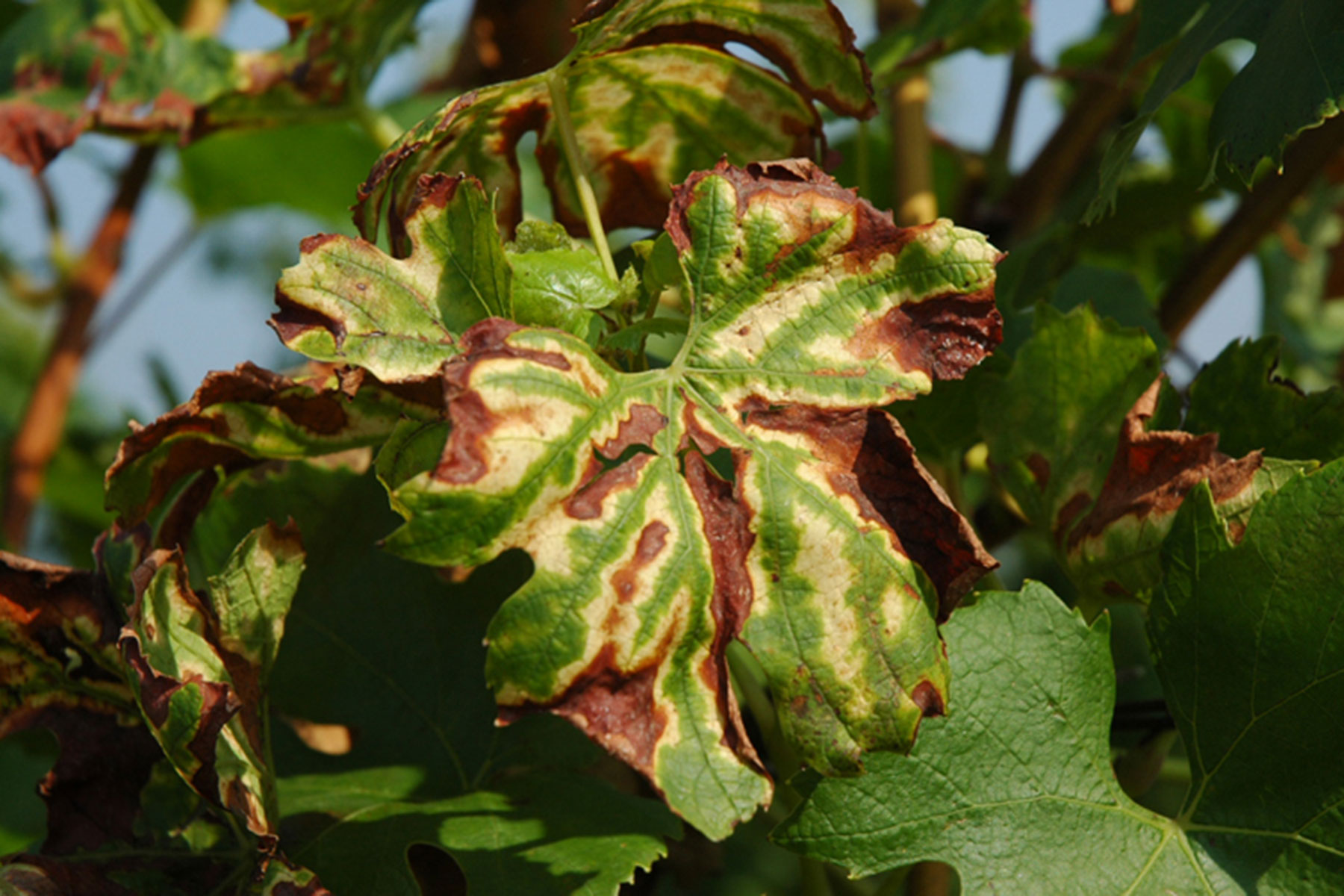Vintec treatment
The damage caused by the fungal disease Esca in viticulture is becoming increasingly widespread. Chemical treatment is not possible. Winegrowers have to uproot and replant infected vines. The biological preparation Vintec from Belchim is intended to stop the destruction, but only has a preventative effect.
Esca fungi - there are around 20 different species - penetrate the xylem (wood) of the vine and block the plant's vital water and nutrient channels.
The infestation is often already latent but not externally recognisable. It becomes acute when the plant experiences additional stress, for example a lack of water in dry years such as 2018 to 2020, when many infested vines die within a short period of time, displaying distinctive leaf symptoms (tie spot). Different grape varieties are susceptible to the harmful fungus to varying degrees, for example Burgundy varieties very little, but Riesling very strongly.
Behind the product name Vintec lies a fungus like Esca, but a useful one. The scientific name Trichoderma atroviride, stem SC 1, refers to a biological antagonist of Esca fungi that occurs in the wild and often lives in symbiosis with the vine. Vintec has a regular authorisation until 2032. The protective fungus Trichoderma grows into the wood of the vine after the application of Vintec, thereby blocking the path of the Esca fungi that follow. The application has some special features compared to chemical preparations:
- The most important is that the use of the fungus only has a preventative effect, not a curative one! This means that when an Esca infestation becomes visible on a vine, it is too late. Even Vintec can no longer help here! Consistent and therefore most promising is a basic immunisation at our vine nursery.
- Furthermore, Trichoderma reacts sensitively to fungicides. The application equipment must therefore be thoroughly cleaned beforehand.
- After the protective fungus has been sprayed onto the wood wound, temperatures in the vineyard should be above 10°C for two to three days to ensure optimum colonisation of the wood. The main application period is after pruning - i.e. winter to spring
- As Esca mainly penetrates the vine through wounds, i.e. it finds an open door after every pruning, Vintec can only be successful if all wood wounds are treated every year as soon as they appear. Further information at: www.belchim-agro.de/vintec

As a vine nursery, we are also observing that Esca is spreading more and more in the vineyards and the economic damage is more serious than with other fungal diseases of the vines. This is because uprooting and replanting is extremely labour-intensive and costly. Since 2016, we have started to carry out trials with the use of Vintec in our yielding vines, rootstocks and in our vine nursery. Since the 2018/19 season, we have been immersing large quantities of our grapevine production in a Vintec water suspension. This is particularly the case for susceptible varieties such as Riesling, Traminer and Sauvignon blanc, as well as targeted pre-orders from our customers. The treatment of rootstocks and scions protects the young vines throughout the entire vine training process. If desired, these can be dipped again before planting. The plants absorb the protective fungus Trichoderma through their roots and the fungus spreads systemically throughout the tissue right up to the shoot tip.
The success of the annually repeated Vintec treatment can only be recognised by the winegrower after ten to twelve years. This is how long it takes Esca to establish itself in a vineyard. If you are interested in vintec-treated vines, you should let us know a year in advance so that we can produce accordingly. There is an additional charge of 0.15 to 0.30 euros per plant for vintec-treated planting stock.
If you have any questions, please do not hesitate to contact us!








